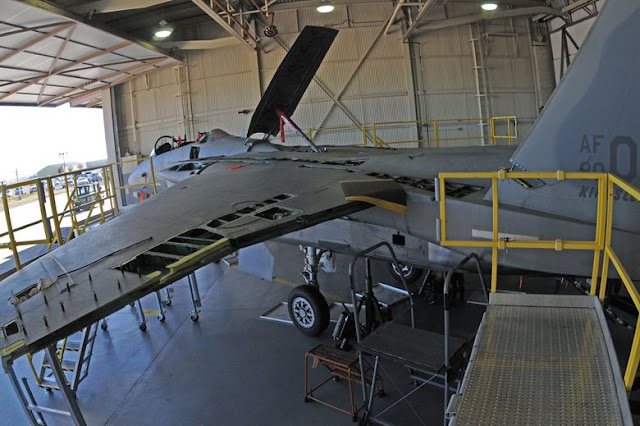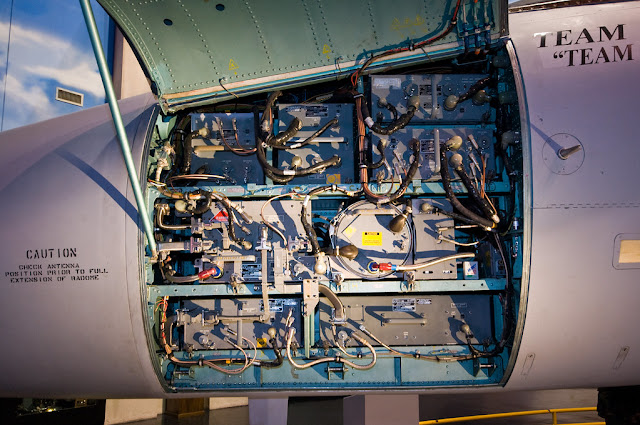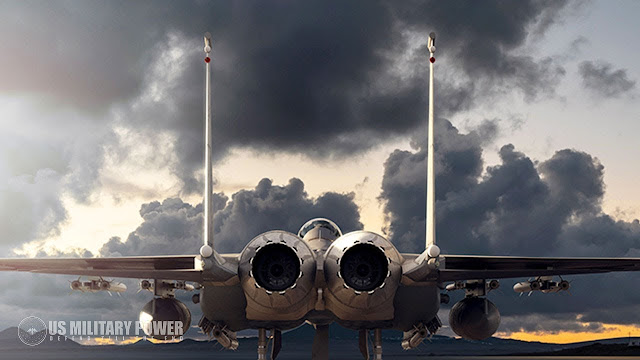F-15EX: il ritorno dell’Aquila 44 anni dopo!
A prima vista, un F-15 di oggi potrebbe assomigliare a qualsiasi altro esempio del venerabile disegno della McDonnell Douglas, ma in realtà è un F-15EX, con elettronica, armamenti in dotazione e funzionalità multi-ruolo avanzatissime.
Nessuno guardando i raffinati display di Patrick Henry nell'F-15 a Parigi nel 1975 avrebbe potuto immaginare che l'aereo sarebbe stato ancora in produzione 44 anni dopo, anche se sotto l'egida della Boeing e non della McDonnell Douglas. Il fatto che Boeing stesse per costruire una nuova variante della potente Aquila per l'USAF avrebbe ulteriormente inficiato la credibilità, 18 anni dopo l'ordinazione degli ultimi F-15 da parte dell’USAF. Eppure è esattamente quello che negli ultimi anni sta succedendo, con la richiesta di bilancio del Fiscal Year 2020 dell'USAF tra cui 1,1 miliardi di dollari per l'acquisto dei primi otto dei 144 aerei F-15EX previsti. In base a questo piano, l’US Air Force dovrebbe ricevere due F-15EX nel 2022, altri sei nel 2023 e un totale di 80 aerei nei prossimi cinque anni.
Nessuno sarebbe stato in grado di prevedere che altri avrebbero continuato il lavoro paziente del direttore delle operazioni di volo della McDonnell Douglas Joseph Dobronski, che ha dimostrato l'aereo con potenziali clienti sul sedile posteriore. Questi sforzi sono culminati in 108 recenti vendite di Eagle all'Arabia Saudita ed al Qatar, e queste vendite hanno a loro volta contribuito a circa $ 5 miliardi di investimenti nello sviluppo di modelli sempre più avanzati dell'F-15.
Alcuni anni fa, l'USAF ha puntato il suo futuro su una forza di combattimento "stealth" basata sul Northrop B-2 e sugli F-117, F-22 e F-35 della Lockheed. I vincoli di costo e l'ascesa di armi furtive hanno portato a un mix di bombardieri più realistico, ma l'aeronautica è rimasta dell'idea che avrebbe introdotto in servizio di prima linea solo aerei da caccia di quinta generazione a bassa osservabilità, eliminando gradualmente i caccia di quarta generazione come l'F-15 e l'F-16 il più rapidamente possibile.
Tuttavia, i limiti di costo hanno interrotto prematuramente la produzione dell'F-22, mentre i ritardi dell’F35 hanno costretto l'USAF ad utilizzare i caccia di quarta generazione per un periodo molto più lungo di quanto previsto.
L'USAF ha presto compreso il valore di far funzionare insieme aeromobili di quarta e quinta generazione per fornire una forza più letale ed economica di quanto sarebbe possibile usando le sole piattaforme di quinta generazione. Con i giusti datalink e specifiche tattiche, è possibile sfruttare i vantaggi distinti di ogni generazione, evitando al contempo o mitigando le debolezze intrinseche del design di entrambe le generazioni.
Mentre piattaforme di quinta generazione come l'F-35 possono utilizzare sensori invisibili e avanzati per operare nello spazio aereo ostile, gli aerei come l'F-15 offrono prestazioni più elevate e grandi carichi utili esterni.
Nelle regioni contese, una squadra di F-15EX con velivoli di quinta generazione può ottenere il massimo da entrambe le piattaforme. Una forza combinata che incorpora entrambe le generazioni è più letale ed economica e creerà problemi complessi agli avversari che tentano di difendersi da essa.
Secondo i piani originali della US Air Force, 749 F-22 avrebbero sostituito completamente l'F-15C, ma l'acquisto dell'F-22 è stato interrotto prematuramente nel 2009, lasciando un significativo deficit nei caccia da superiorità aerea (un ruolo per il quale l'F-35 è scarsamente adatto). L'USAF, quindi, continua a operare con 234 velivoli F-15C / D principalmente da sei installazioni Air National Guard con sede a CONUS e due basi di servizio attivo a Lakenheath nel Regno Unito e Kadena in Giappone. Questi tuttavia si stanno esaurendo rapidamente e l'F-15EX promette di colmare il divario in modo rapido e semplice, aumentando la struttura operativa dell'USAF e rafforzando le sue capacità di difesa aerea senza interrompere la più ampia iniziativa di approvvigionamento dell’F-35.
L'F-15EX può utilizzare circa il 70% dell'inventario di ricambi del vecchio Eagle esistente ed è compatibile con le attrezzature e le infrastrutture di supporto a terra esistenti dell'F-15C / D. La conversione per i piloti e l'equipaggio sarebbe rapida e semplice, consentendo a un'unità di F-15C in servizio attivo di convertirsi da F-15C / D a F-15EX in 12 mesi, rispetto ai 18 mesi per l'F-35.
L'F-15EX consentirebbe anche alle unità F-15C / D di oggi di abbracciare una missione multi-ruolo piuttosto che il puro ruolo aria-aria che sono stati loro tradizionalmente assegnati. L'F-15EX è un derivato dell'ultimo standard di esportazione Advanced Eagle. Le successive varianti di esportazione dell'F-15 hanno progressivamente introdotto nuove capacità nell'aeromobile base Strike Eagle F-15E a due posti, culminando nella cosiddetta Advanced Eagle.
Il primo passo sulla strada per Advanced Eagle è stato lo sviluppo dell'F-15K Slam Eagle per la Corea, che ha introdotto una serie di funzioni non presenti sull'F-15E dell’USAF, tra cui un sistema di ricerca e traccia a infrarossi AAS-42, una raffinata Tactical Electronics Warfare Suite e il radar AN / APG-63 (V)1. Questo include l'elaborazione digitale, che lo rende aggiornabile agli standard APG-63 (V)3 tramite un aggiornamento dell'antenna a scansione elettronica (AESA) attiva. L'F-15K ha anche introdotto nuove armi, tra cui l'AGM-84K SLAM-ER, l'AGM-84H Harpoon Block II e il KEPD 350.
L'F-15SG per Singapore era dotato di un radar AESA AN / APG-63 (V) 3 e di un sistema di guerra elettronica digitale BAE Systems (DEWS). L'F-15SA per l'Arabia Saudita è stata la prima variante a utilizzare effettivamente il nome Advanced Eagle / F-15 Advanced. L'F-15SA ha introdotto un cockpit completamente digitale e un sistema di controllo di volo fly-by-wire digitale. Quest'ultimo ha consentito la riattivazione di due punti d’attacco critici, che erano stati disattivati all'inizio del programma F-15 a causa di problemi di stabilità.
Il Qatar ha ordinato l'F-15QA Advanced Eagle ulteriormente migliorato, con display di grandi dimensioni e altri miglioramenti, e l'F-15EX è strettamente basato su questa configurazione. L'USAF si è avvicinata alla Boeing per acquisire una variante dell’F-15 simile, poi soprannominata F-15X, all'inizio del 2017. Questo ha proposto l'F-15X USAF (noto come F-15CX in forma monoposto o come l'F-15EX in due- forma del sedile) ha combinato le funzionalità avanzate dell'F-15SA e dell'F-15QA con un radar AESA AN / APG-82, utilizzato dalle F-15E Strike Eagles aggiornate. Il nuovo velivolo offrirà una durata di servizio di 20.000 ore e ridurrà drasticamente i costi operativi orari rispetto all'F-15 legacy o all'F-35A.
Nel 1975, la stampa USA citò l'F-15 come esempio di una nuova generazione di tecnologia americana in crescita, respingendo i concorrenti europei come "tristemente rappresentante del raffinamento finale di una generazione precedente". Oggi è l'F-15 che rappresenta l'ultimo potenziamento della precedente generazione di caccia, eppure sta vincendo con successo gli ordini di fronte alla concorrenza di aerei come Dassault Rafale ed Eurofighter, che sono, per molti aspetti, rappresentativi di un generazione completamente nuova.
Ancora più straordinariamente, il nuovo F-15EX è pronto a scrivere un nuovo capitolo nella illustre storia dell’Aquila.
ENGLISH
F-15EX: THE RETURN OF THE EAGLE
At first glance, this F-15 may look like any other example of the venerable McDonnell Douglas design, but it’s actually an F-15EX, with advanced multi-role equipment and capabilities.
No one watching Patrick Henry’s polished displays in the F-15 at Paris in 1975 could have guessed that the aircraft would still be in production 44 years later, albeit under the auspices of Boeing and not McDonnell Douglas. That Boeing would be about to build a new variant of the mighty Eagle for the U.S. Air Force would have strained credibility even further, 18 years after the last USAF F-15s were ordered. And yet that is exactly what is happening, with the USAF’s Fiscal Year 2020 budget request including $1.1 billion to buy the first eight of 144 planned F-15EX aircraft. Under this plan, the Air Force is scheduled to receive two F-15EXs in 2022, six more in 2023, and a total of 80 aircraft over the next five years.
Nor would anyone have been able to predict that others would be carrying on the patient work of McDonnell Douglas flight operations director Joseph Dobronski, who demonstrated the aircraft with potential customers in the back seat. These efforts have culminated in 108 recent Eagle sales to Saudi Arabia and Qatar, and these sales have in turn contributed to some $5 billion of investment in the development of ever more advanced models of the F-15.
Some years ago, the USAF staked its future on an "all stealth" combat aircraft force based on the Northrop B-2, and Lockheed’s F-117, F-22, and F-35. Cost constraints and the rise of stealthy stand-off weapons led to a more realistic bomber mix, but the air force remained wedded to the idea that it would procure only low observable (stealthy) fifth-generation fighter aircraft, phasing out fourth-generation fighters like the F-15 and F-16 as quickly as it could replace them.
Cost caps brought production of the F-22 to a premature halt, however, while delays to the Joint Strike Fighter have forced the USAF to operate fourth-generation fighters for far longer than it had planned.
The USAF soon came to realize the value of operating fourth- and fifth-generation aircraft together to provide a more lethal and cost-effective force than would be possible by using fifth-generation platforms alone. With the right datalinks and tactics, the distinct advantages of each generation could be leveraged, while at the same time avoiding or mitigating against the inherent design weaknesses of either generation.
While fifth-generation platforms like the F-35 can use stealth and advanced sensors to operate within contested airspace, aircraft like the F-15 offer higher performance and large external weapons payloads.
In contested regions, teaming F-15Cs with fifth-generation aircraft can make the most out of both platforms. A combined force incorporating both generations is more lethal and cost-effective and will create complex problems for adversaries attempting to defend against it.
Under the U.S. Air Force’s original plans, 749 F-22s would have completely replaced the F-15C, but the F-22 buy was prematurely terminated in 2009, leaving a significant shortfall in air superiority fighters (a role for which the F-35 is poorly suited). The USAF, therefore, continues to operate 234 F-15C/D aircraft primarily from six CONUS-based Air National Guard installations and two active-duty bases at Lakenheath in the UK and Kadena in Japan. These are rapidly running out of life, however, and the F-15EX promises to plug the gap quickly and easily, boosting the USAF’s shrinking force structure, and reinforcing its air defense capabilities without disrupting the larger F-35 procurement initiative.
The F-15X can use approximately 70 percent of the existing Eagle spares inventory and is compatible with the F-15C/D’s existing ground support equipment and infrastructure. Conversion for pilots and groundcrew would be quick and easy, allowing an active duty F-15C unit to convert from the F-15C/D to the F-15EX in 12 months, compared to 18 months for the F-35.
The F-15EX would also allow today’s F-15C/D units to embrace a multi-role mission rather than the pure air-to-air role that they have traditionally been assigned. The F-15EX is a derivative of the latest export standard Advanced Eagle. Successive export variants of the F-15 have progressively introduced new capabilities to the basic two-seat F-15E Strike Eagle airframe, culminating in the so-called Advanced Eagle.
The first step on the road to the Advanced Eagle was the development of the F-15K Slam Eagle for Korea, which introduced a number of features not found on the USAF F-15E, including an AAS-42 Infra-red search and track system, a refined Tactical Electronics Warfare Suite and the AN/APG-63(V)1 radar. This incorporates digital processing, making it upgradable to APG-63(V)3 standards via an Active Electronically Scanned Array (AESA) antenna upgrade. The F-15K also introduced new weapons, including the AGM-84K SLAM-ER, the AGM-84H Harpoon Block II, and the KEPD 350.
The F-15SG for Singapore was fitted with an AN/APG-63 (V)3 AESA radar and a BAE Systems Digital Electronic Warfare System (DEWS). The F-15SA for Saudi Arabia was the first variant to actually use the Advanced Eagle/F-15 Advanced name. The F-15SA introduced a fully digital cockpit and a digital fly-by-wire flight control system. The latter allowed the reactivation of two outboard underwing hardpoints, which had been deactivated early in the F-15 program due to stability issues.
Qatar has ordered the further improved F-15QA Advanced Eagle, with large area displays and other improvements, and the F-15EX is closely based on this configuration. The USAF approached Boeing to acquire a similar F-15 variant, then dubbed F-15X, in early 2017. This proposed USAF F-15X (known as the F-15CX in single-seat form or as the F-15EX in two-seat form) combined the advanced features of the F-15SA and F-15QA with an AN/APG-82 AESA radar—as used by upgraded F-15E Strike Eagles. The new aircraft will offer a 20,000-hour service life and dramatically reduced hourly operating costs compared to the legacy F-15 or to the F-35A.
In 1975, Aviation Week cited the F-15 as an example of a new generation of burgeoning U.S. technology, dismissing European competitors as “sadly representing the final refinement of an earlier generation.” Today it is the F-15 that represents the ultimate enhancement of the previous generation of fighters, and yet it is successfully winning orders in the face of competition from aircraft like the Dassault Rafale and Eurofighter, which are, in many respects, representative of an entirely new generation.
Even more remarkably, the new F-15EX stands ready to write a new chapter in the Eagle’s illustrious history.
(Web, Google, ainonline, Wikipedia, You Tube)
Il prototipo

























































Nessun commento:
Posta un commento
Nota. Solo i membri di questo blog possono postare un commento.